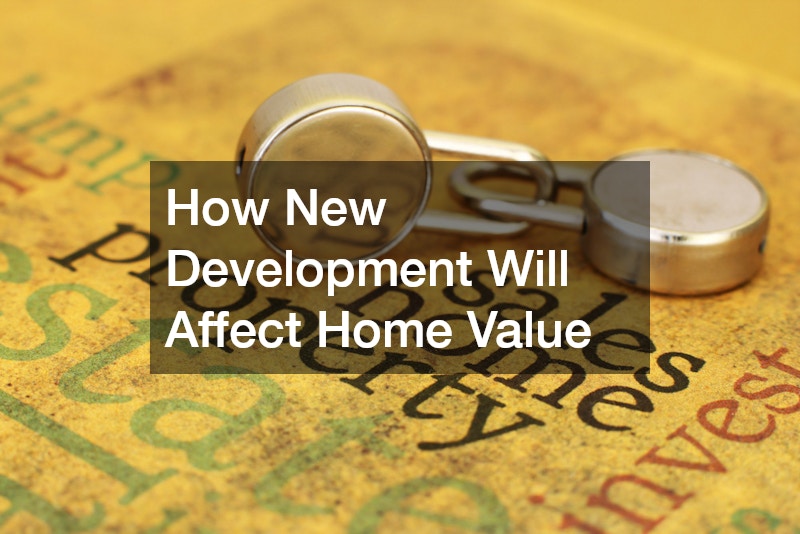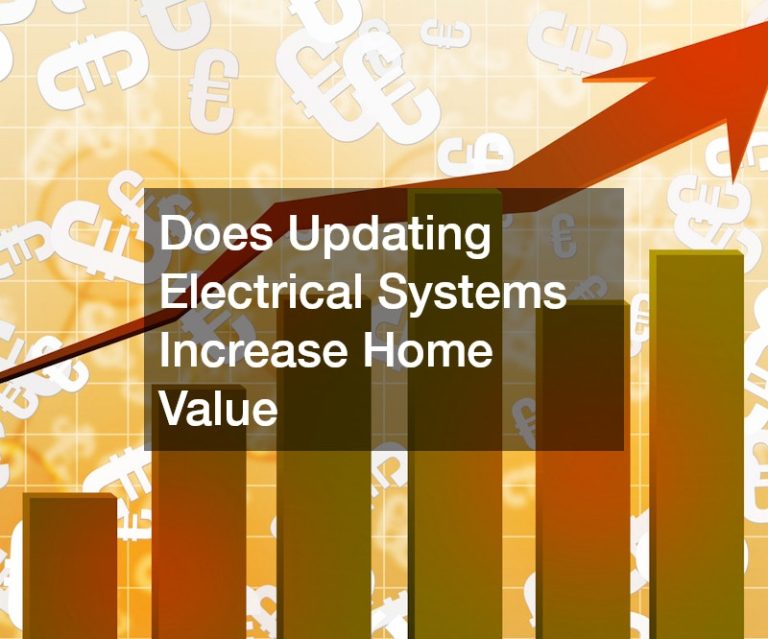Understanding How New Development Will Affect Home Value: Key Factors to Consider
Introduction
New developments play a crucial role in shaping the landscape of neighborhoods and can significantly impact property values. Understanding these impacts is essential for both current homeowners and potential buyers. By staying informed about upcoming developments, individuals can make strategic decisions regarding buying, selling, or renovating their properties.
Developments can manifest in various forms, ranging from residential projects to commercial ventures and public infrastructure enhancements. Each type of development brings its own set of benefits and potential challenges. For homeowners, being proactive and knowledgeable about these factors can lead to better decision-making and ultimately higher property values.
Awareness of new projects allows homeowners to anticipate changes and capitalize on potential opportunities. For example, a new commercial center or public park might make a neighborhood more attractive. Conversely, overdevelopment or increased traffic could pose challenges. Staying up-to-date with local development news is a key strategy for protecting and enhancing property value.
1. The Types of New Developments That Can Affect Home Value
- Residential Developments:

- Single-Family Homes and Gated Communities: How new residential projects can improve neighborhood appeal and increase demand for surrounding homes.
- Apartment Complexes and High-Density Housing: Discuss potential downsides, such as increased traffic and congestion, while acknowledging the boost in local amenities.
- Commercial Developments:
- Shopping Centers and Retail Hubs: How proximity to retail developments can increase convenience and property value.
- Office Buildings and Business Parks: Impact of business developments on employment opportunities, traffic flow, and home values.
- Public Infrastructure Projects:
- Roads, Public Transportation, and Schools: Emphasize how improved infrastructure enhances home values by improving accessibility and desirability.
- Parks and Green Spaces: Public spaces are important in making a neighborhood more attractive for families and increasing property values.
Residential developments, such as single-family homes and gated communities, often enhance the appeal of neighborhoods by offering modern amenities and a sense of community. These developments can increase demand for surrounding homes, leading to higher property values. However, high-density housing, like apartment complexes, might bring increased traffic and congestion, though they often come with improved local amenities.
Commercial developments, including shopping centers and retail hubs, can significantly boost property values by increasing convenience and proximity to essential services. Office buildings and business parks contribute to employment opportunities and can positively impact home values by attracting new residents and economic activity. However, these business developments may also lead to increased traffic and require careful planning to mitigate potential downsides.
Public infrastructure projects, such as roads, public transportation, and schools, enhance home values. Improved infrastructure makes neighborhoods more accessible and desirable, increasing property values. Parks and green spaces attract families and enhance the quality of life, making the area more attractive and boosting home values.
2. Positive Impacts of New Development on Home Value
- Increased Demand for Housing:
- How new developments attract new residents and drive up demand, potentially increasing property values.
- Specific examples of areas where property values surged due to nearby developments.
- Improved Amenities and Services:

- Discuss the benefits of better schools, healthcare facilities, and recreational spaces, typically associated with higher property values.
- Real-world case studies of areas with amenities that boosted nearby home prices.
- Modernization and Neighborhood Revitalization:
- How revitalizing an older neighborhood with new construction can raise home values across the entire area.
- Examples of gentrification and its effect on property values.
New developments often attract new residents, leading to increased demand for housing and potentially raising property values. Property values have seen substantial surges in areas where significant development projects have taken place, such as downtown revitalizations. This increased demand is particularly evident in cities experiencing urban renewal.
Improved amenities and services, including better schools, healthcare facilities, and recreational spaces, are often associated with higher property values. Areas that invest in these amenities typically see a corresponding boost in home prices. Real-world examples, such as neighborhoods with new parks or high-ranking schools, demonstrate the positive impact of these enhancements on property values.
Modernization and neighborhood revitalization through new construction can raise home values across entire areas. Gentrification, where older neighborhoods are upgraded with new amenities and housing, often leads to increased property values. However, balancing these developments is essential to avoid potential social and economic disparities.
3. Negative Impacts of New Development on Home Value
- Overdevelopment and Saturation:
- How can too many new housing units or commercial spaces dilute the demand and potentially lower home values?
- Strategies homeowners can use to mitigate the effects of overdevelopment in their area.
- Increased Traffic and Noise:

- The impact of new developments on traffic congestion, noise levels, and overall quality of life.
- Steps homeowners can take to manage or buffer against negative environmental changes, such as noise barriers or landscaping.
- Potential for Changing Demographics:
- How shifts in the types of residents and businesses moving into the area can affect local home values, both positively and negatively.
- Homeowners’ considerations when assessing how these demographic changes may impact their own property’s value.
Overdevelopment can dilute demand, counterproductively affecting property values. When numerous housing units or commercial spaces are built in a short time frame, this can lead to oversupply, potentially lowering home values. Homeowners can mitigate these effects by staying informed about local zoning changes and advocating for balanced development.
Increased traffic and noise from new developments can negatively impact the quality of life and property values. Traffic congestion and higher noise levels can detract from a neighborhood’s appeal. Homeowners can manage these changes by implementing noise barriers, landscaping, or other mitigating measures to buffer against these environmental impacts.
Changing demographics due to new developments can affect local home values in various ways. While an influx of businesses and new residents can boost property values, shifts in resident types might also bring challenges. Homeowners need to carefully consider these demographic changes when assessing how new development will affect home value in their areas.
4. Key Factors Homeowners Should Monitor Before and After New Development
- Proximity to the Development:
- The importance of location and being close to a new development may either increase or decrease your home’s value, depending on the type of development.
- Example scenarios of proximity affecting value.
- Market Conditions:
- How may broader real estate trends in your city or region amplify or mitigate the effect of new developments on home value?
- There are key indicators to watch, such as rising interest rates, local job market strength, and housing demand trends.
- Quality and Type of Development:
- High-quality developments (e.g., luxury condos, sustainable commercial buildings) are likely to positively influence home values compared to lower-quality developments.
- Case studies or real-life examples that illustrate this point.
Proximity to new development plays a significant role in determining its impact on property value. Homes close to high-quality developments, such as luxury condos or sustainable commercial buildings, may experience significant value increases. On the other hand, being too close to dense commercial areas could result in lower property values due to congestion or noise.
Market conditions can amplify or mitigate new developments’ effects on home value. For instance, rising interest rates or a robust local job market might influence property values in conjunction with new developments. Homeowners should monitor these broader real estate trends to anticipate how new developments will affect home value in their local area.
The quality and type of development can make a substantial difference. High-quality developments often have a positive influence, attracting more affluent residents and businesses, while lower-quality projects might not boost property values as effectively. Specific case studies and real-life examples can illustrate the impact of different types of development on home values.
5. Steps Homeowners Can Take to Maximize Property Value Amid New Development
- Keep Track of Local Zoning Changes:
- Advice on staying informed about zoning changes and how they could affect your property’s value.
- Resources homeowners can use to stay updated, such as local government websites or real estate newsletters.
- Make Strategic Renovations:
- Suggested renovations homeowners can consider to boost their home’s value as new developments occur nearby (e.g., curb appeal improvements, landscaping, interior updates).
- Consult with Local Real Estate Experts:
- It is important to consult real estate agents, appraisers, or local property developers to get a professional evaluation of how nearby developments will affect home value.
- Tips for homeowners on finding trustworthy professionals.
Staying informed about local zoning changes is crucial for homeowners to maximize property value amid new developments. Tracking zoning laws can help homeowners anticipate and respond to changes that might affect their property. Resources like local government websites or real estate newsletters can be valuable tools for staying updated.
Strategic renovations can enhance property value, mainly as new developments occur nearby. Curb appeal improvements, landscaping, and interior updates are effective ways to boost a home’s value. Homeowners may also consider consulting related articles, such as “Does Updating Electrical Increase Home Value,” to determine the best renovation strategies.
Consulting with local real estate experts can give homeowners valuable insights into how nearby developments affect home value. Real estate agents, appraisers, and property developers can offer professional evaluations and advice. Finding trustworthy professionals involves checking credentials, seeking referrals, and reading reviews.
6. Long-Term Impacts of New Development on Home Value
- Appreciation Over Time:
- Discussion on how the long-term effect of new developments may gradually raise property values as the area matures and becomes more desirable.
- How homeowners can plan for long-term appreciation by holding onto properties in up-and-coming areas.
- Changes in Neighborhood Dynamics:
- How new developments can reshape the character and reputation of a neighborhood over time, leading to increased desirability and property value growth.
- Encouragement for homeowners to embrace positive change while being mindful of potential drawbacks, such as increased living costs.
New developments can lead to long-term appreciation of property values as the area matures and becomes more desirable. Over time, well-planned developments enhance neighborhood appeal, driving up property values. Homeowners can plan for this appreciation by holding onto properties in up-and-coming areas, capitalizing on future growth.
Changes in neighborhood dynamics due to new developments can significantly reshape the character and reputation of an area. As neighborhoods become more desirable, property values tend to grow. Homeowners are encouraged to embrace these positive changes while being mindful of potential drawbacks, such as increased living costs, which could accompany the desirability factor.
Long-term impacts of new developments are often gradual but can lead to substantial property value growth. Staying informed and proactive allows homeowners to maximize the benefits of these developments. Balancing optimism with caution is essential, ensuring that any potential negative impacts are also considered.
7. Case Studies: Real-Life Examples of How New Developments Impacted Home Values
- Example 1: Urban Revitalization and Property Value Surge:
- Overview of a city that underwent significant urban development and the positive effect on local property values.
- Example 2: Overdevelopment and Decline in Property Value:
- An example of an area where rapid and excessive development negatively affected home prices due to saturation and infrastructure strain.
Urban revitalization projects often lead to significant surges in property values. For example, cities like Portland and Denver have seen substantial property value increases due to extensive urban development. These projects improve local amenities and attract new residents, driving up demand for housing.
Conversely, overdevelopment can lead to declining property values due to saturation and infrastructure strain. Areas like some parts of Miami have experienced this issue, where rapid development led to oversupply and traffic problems. These challenges highlight the importance of balanced growth and careful planning in development projects.
Real-life examples illustrate the varying impacts of new developments on home values. By learning from these case studies, homeowners can better anticipate how developments might affect their property values and take proactive measures. It emphasizes the importance of staying informed and engaged with local development trends.
Conclusion
In conclusion, new developments can significantly impact property values both positively and negatively. While they can increase demand for housing, improve amenities, and revitalize neighborhoods, they can also lead to challenges like overdevelopment, increased traffic, and changing demographics. For homeowners, understanding these dynamics is crucial for making informed decisions about their property.
To maximize property value, homeowners should stay informed about local developments and take strategic measures. This includes monitoring zoning changes, renovating, and consulting real estate experts. By being proactive and knowledgeable, homeowners can protect and enhance their property’s value amid new developments.
Ultimately, embracing the positive aspects of new developments while mitigating potential drawbacks can lead to significant property value growth. Homeowners should consider home renovations that could offset any negative impacts and potentially increase their home’s value in conjunction with nearby developments. For more insights, check out related articles, such as “Does Updating Electrical Increase Home Value”.

